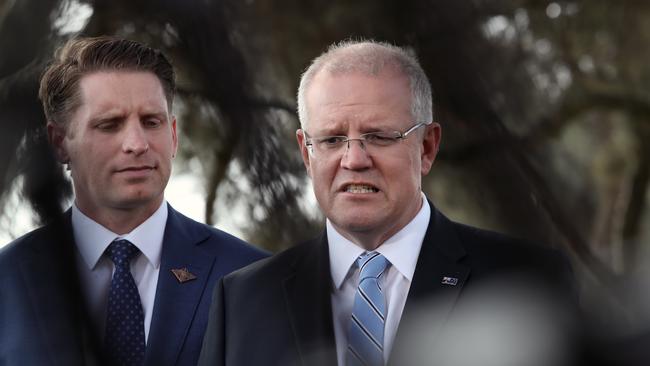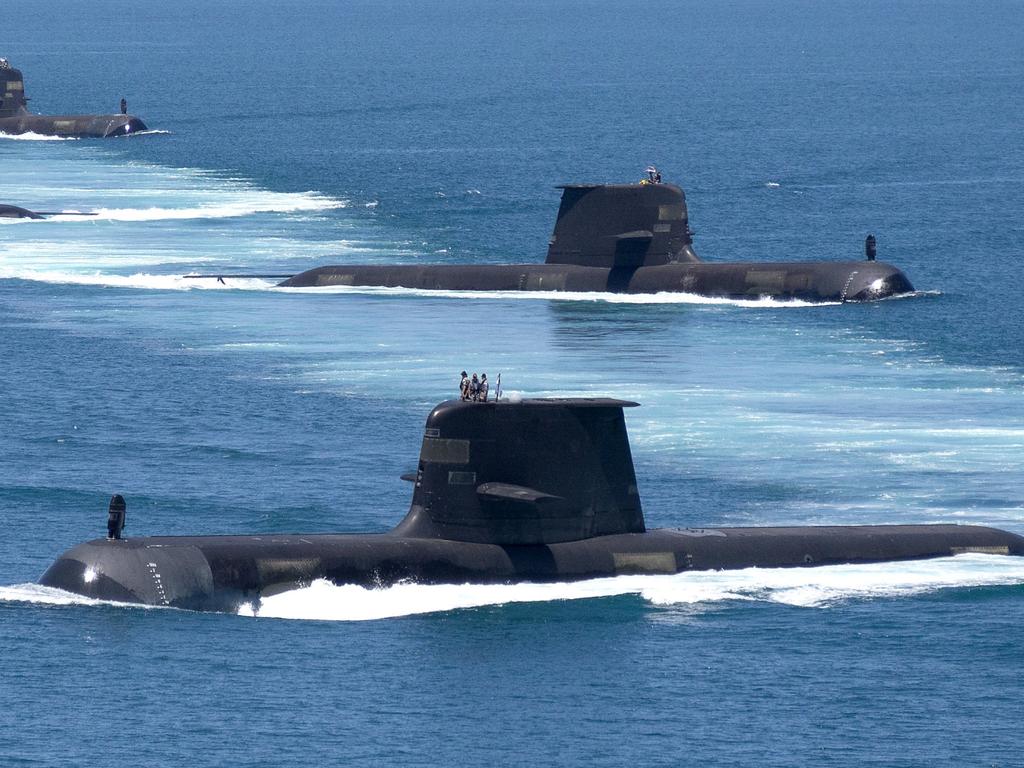
Prime Minister Scott Morrison and recently appointed Assistant Defence Minister Andrew Hastie appear to have discovered why the French submarine project went so horribly wrong.
The key to gaining that understanding starts with reading the original 2016 French tender document which, in writing, estimated the cost of the submarine project at between $20bn and $25bn in 2016 dollars.
Years later the defence minister and naval officials claimed that the tender price was $50bn in 2016 dollars, or twice the level stated in the tender.
Partly at my urging, Morrison and Hastie appear to have checked the original contract documents and confirmed the lower figure.
While some of the $25-plus billion gap between recent ministerial/naval statements and the 2016 tender can be explained via the cost of the US combat system and infrastructure, a cavern remains.
Once Morrison and Hastie understood that the sums did not add up it opened up the whole, horrible five-year mess.
To Scott Morrison’s great credit, he is now openly expressing concern about the project and looking at alternatives, which means that he and Hastie have delved into the mire that the cost differential key opens up.
What they would have discovered is well known to my regular readers but it’s important to summarise the saga so the likely future Morrison/Hastie actions can be understood.
I add that it gives me no pleasure at being right because this is a national tragedy. For most of the last five years I have been almost a lone regular critic among media commentators. Now others are joining and I am grateful.
Morison and Hastie will have discovered:
– That in the discussions that led up to the French beating the Germans and Japanese in the tender, the French promised to set up a massive web of Australian suppliers. Once the French had won, its original team was removed and replaced by people with a totally different agenda. Australia is now being told that there are not sufficient Australian suppliers with the necessary skills. Hello?!

We always knew that and so did the original French tenderers. The original French plan detailed how the industry would be built up. It makes no sense whatsoever to have a fleet of submarines isolated in Australia without a strong industrial base.
– The French promised to make Australia a regional submarine research centre, which was a very exciting concept. But those that replaced the original team now do most of the research in France and we are shown the results. If we want changes, it costs money. This is nothing like the collaboration originally promised.
– The plan to have the submarines commissioned in the 2030s and 2040s was predicated on the belief that there was no immediate threat in the region. It was a totally wrong assumption. We need submarines urgently.
– Many in the Australian Navy believed that because of our large distances Australia should have a nuclear submarine fleet. But that would involve establishing and nuclear industry which was politically not possible — at least in the political climate of ten years ago.
The French proposal was to design and build a large submarine using massive amounts of 100 year-old technology batteries. It had never been done before and was high risk. But technology has moved on and the Chinese are now developing and building molten salt-cooled submarines that are very effective. Conventional submarines must surface to recharge and modern detection equipment now makes our large submarines very vulnerable.
– A key part of the Australian submarine fleet was the American combat system. The Americans do not trust the French so we had two separate contracts. Australian submarines are being designed in France without direct collaboration with the American combat system experts. It’s a total nightmare and very dangerous given that we are looking at a weapon of war.
– When the 2016 decisions were being made and later when the whole affair started to go wrong, Australian defence officials had the benefit of one of the most experienced and qualified naval boards of advice in the world. They urged Australia not to go down this path but we rejected the advice.
– Then there is the horrible cost story. The Australian government announced in 2016 that it would be paying $50bn, inflation protected, for the submarines. To get that figure it took the original tender estimate of, say, $23bn in 2016 dollars and then added infrastructure and the US combat system and adjusted for inflation. Two years later in 2018, that $50bn original inflation-adjusted 2016 figure had blown out to $90bn. My informants tell me the $90bn inflation-adjusted construction figure is now way over $100bn and could go a lot higher. Total cost of the project over the life of the submarines is now estimated at $220bn but it will go much higher, perhaps to $400bn or $500bn.
Let me conclude with one of the most prophetic commentaries I have written. The date was December 10, 2019 and the headline read: “Submarines project a $220 billion disaster”:
“Very rarely in journalism do you come across a potential disaster that could jeopardise the nation for a generation.
“I have access to information that has made me realise that the proposed submarine project is not a normal mistake that can be managed — it is a national disaster.
“I invite the three most senior members of the cabinet — Scott Morrison, Josh Frydenberg and Mathias Cormann (I know and respect all three) — to read what I have discovered and then use non-defence people to check me out.
“I do not believe my whistleblower is wrong because he or she is acting in the national interest”.
The nation should be very grateful that Morrison and Hastie have finally taken that advice, albeit late. Now they have to act.







